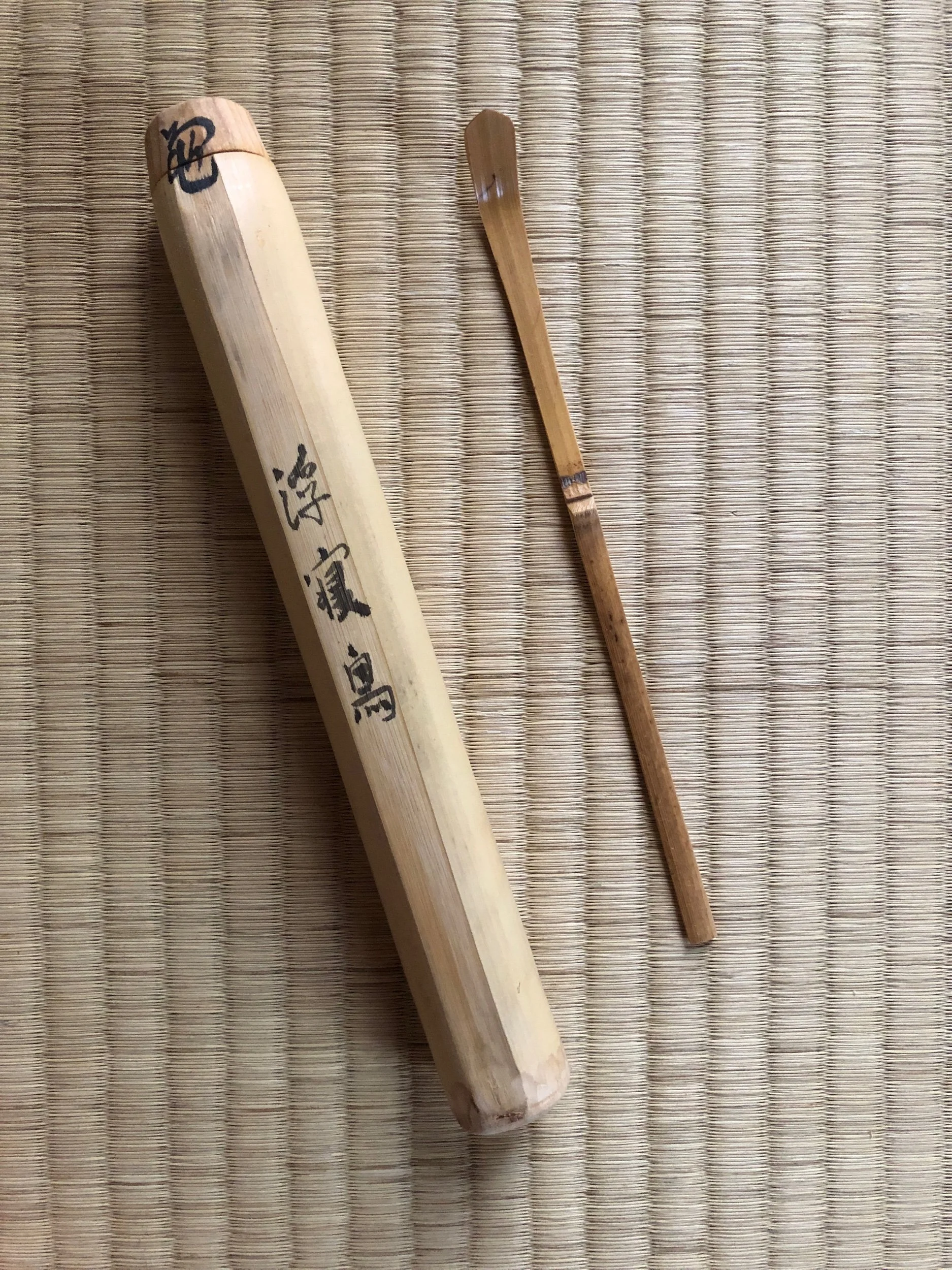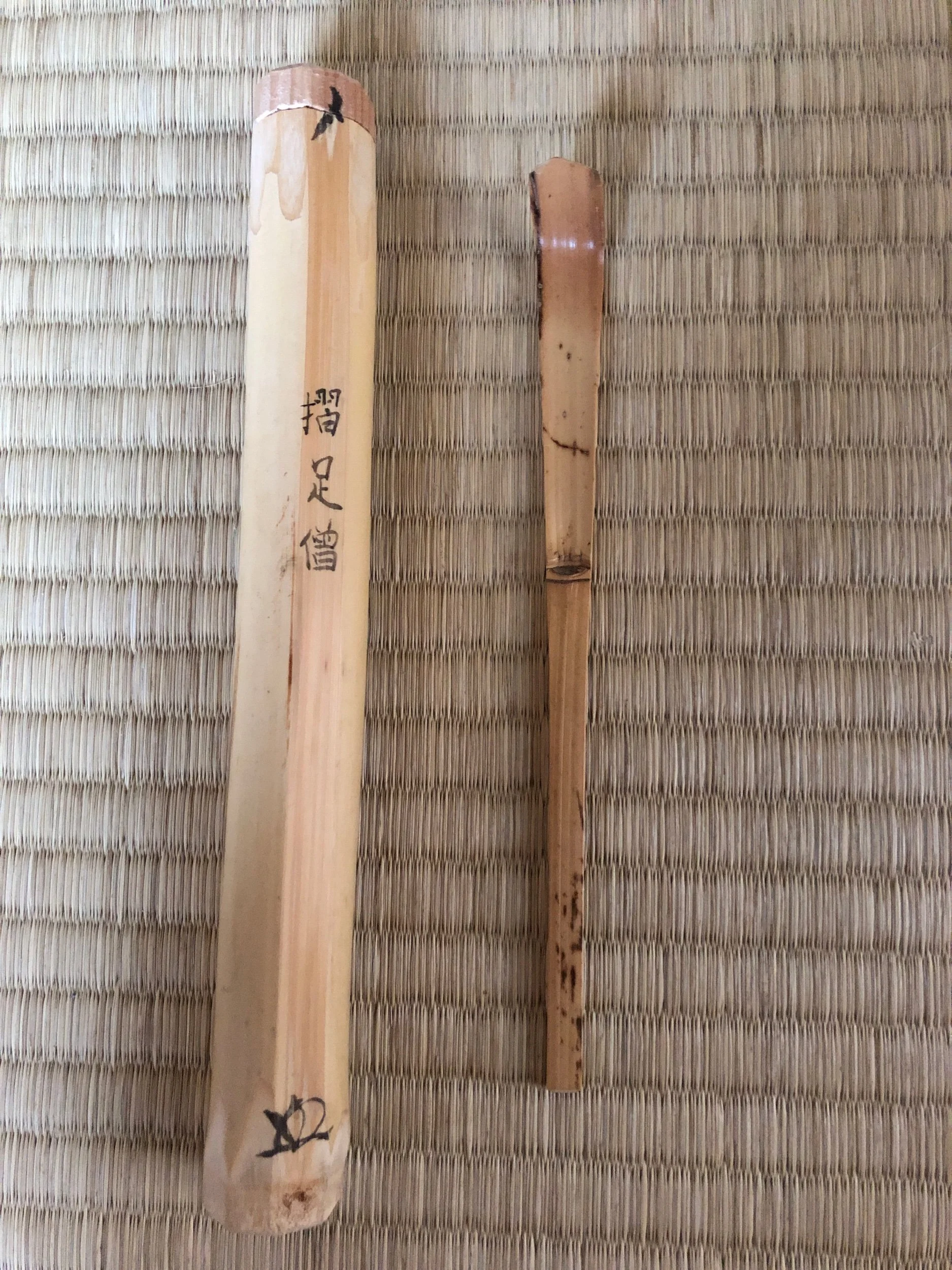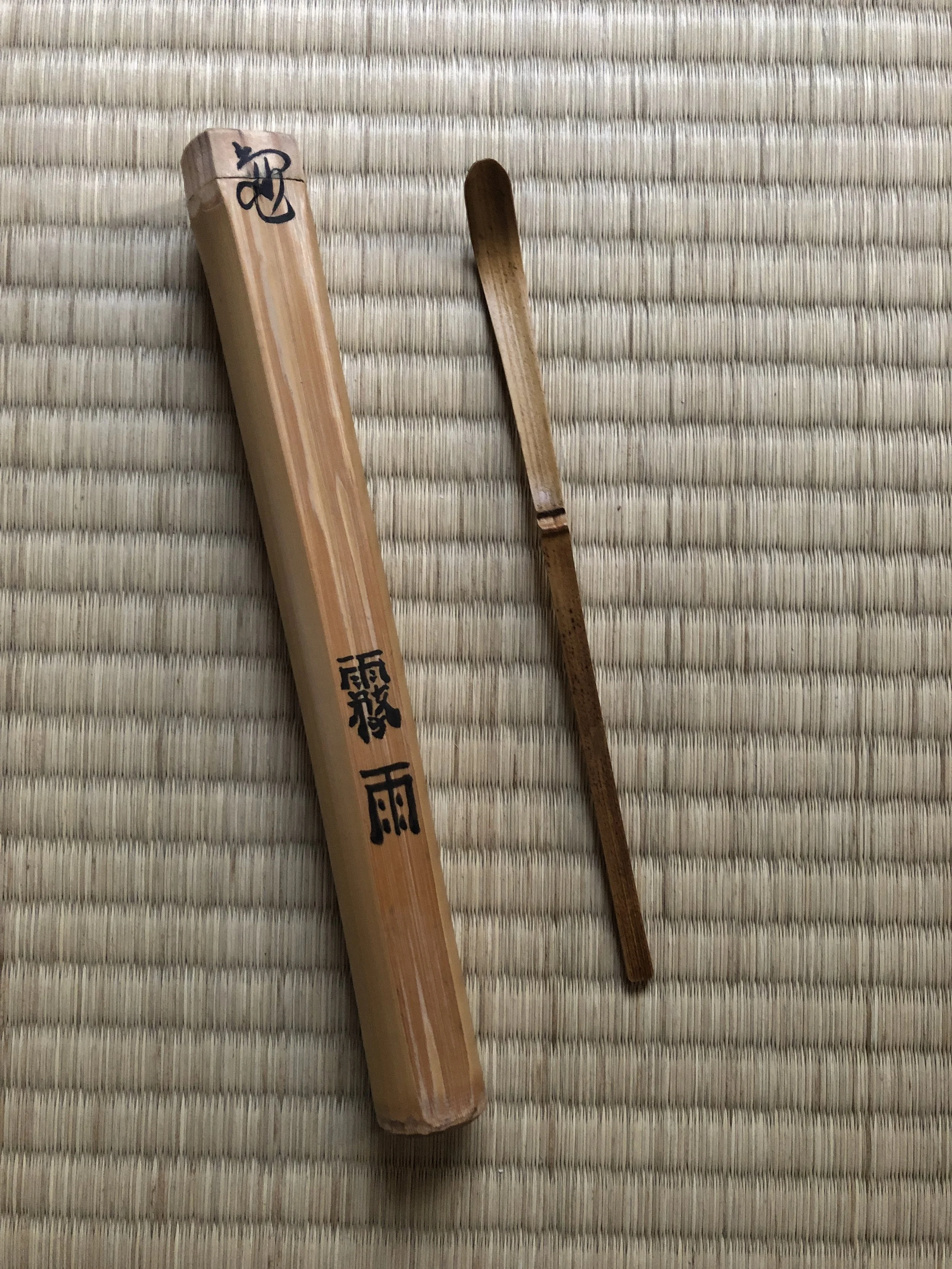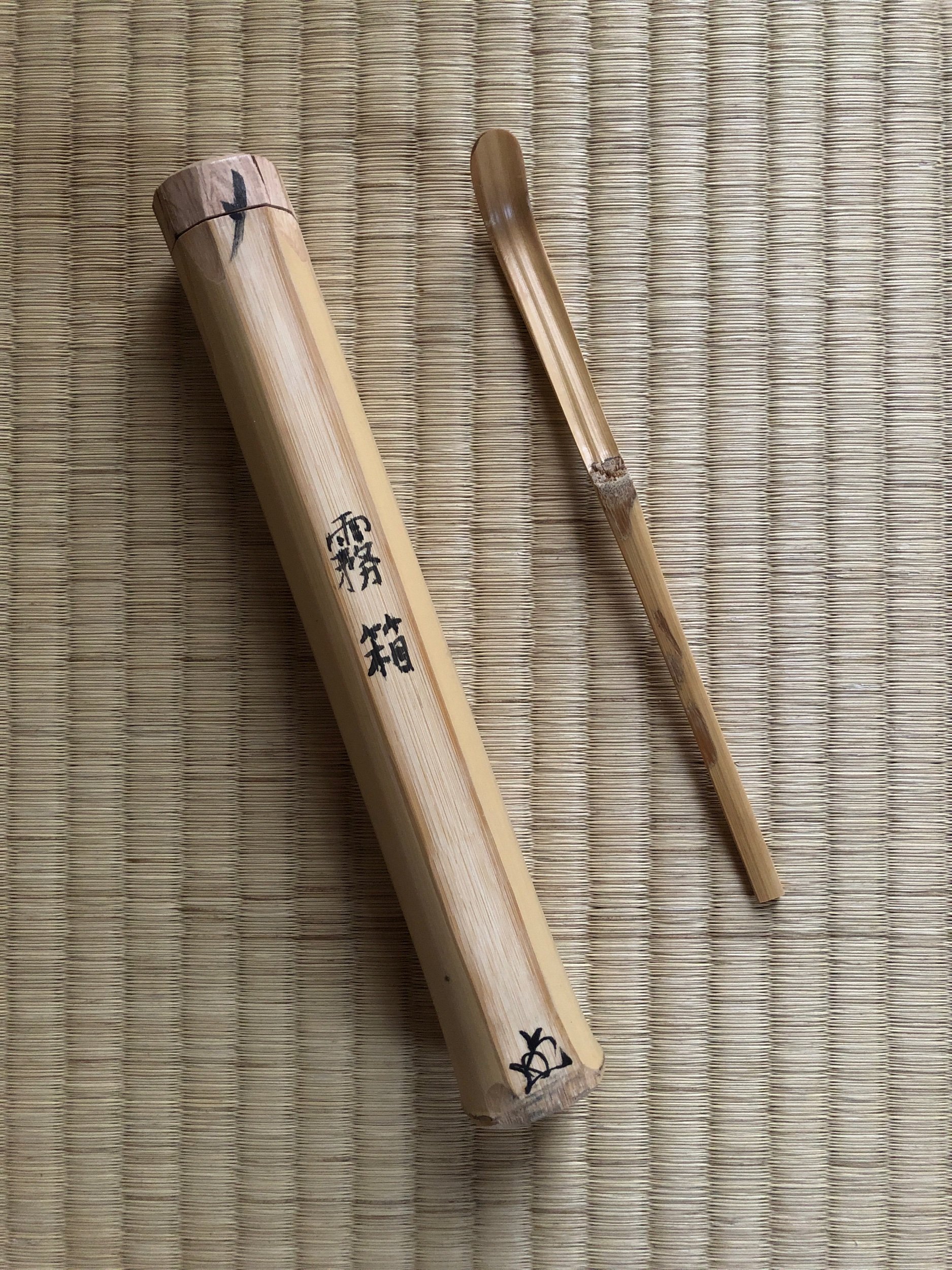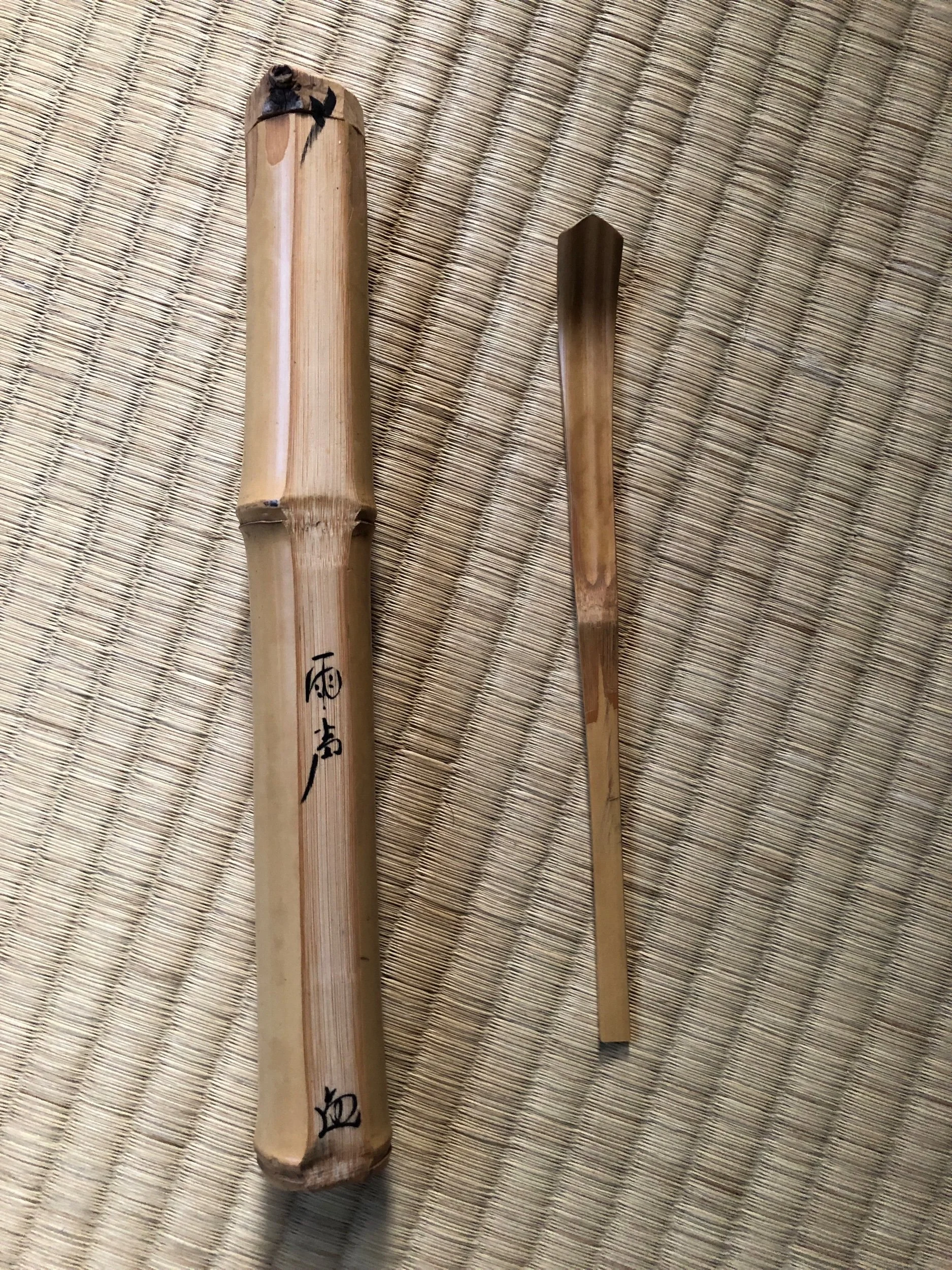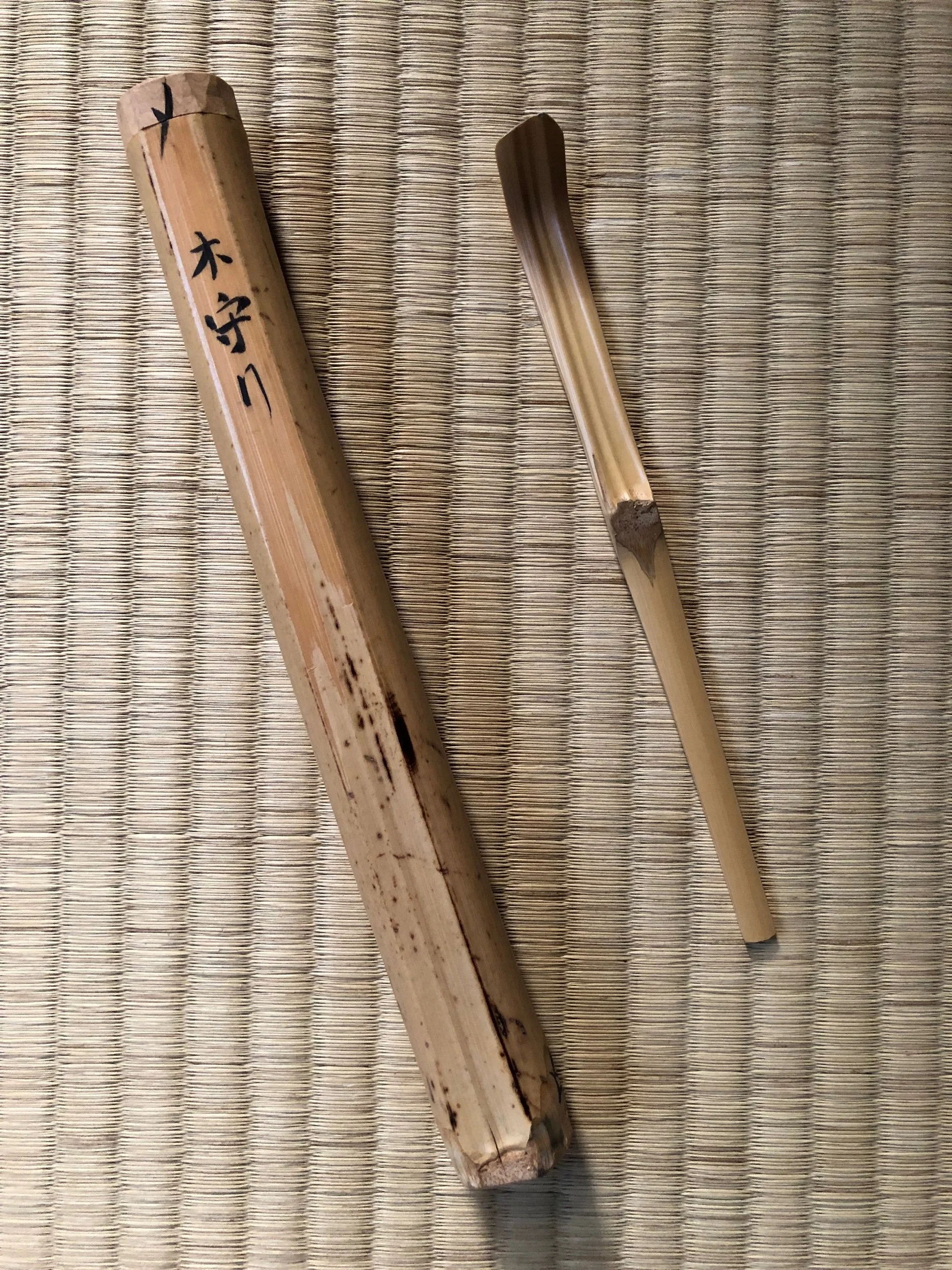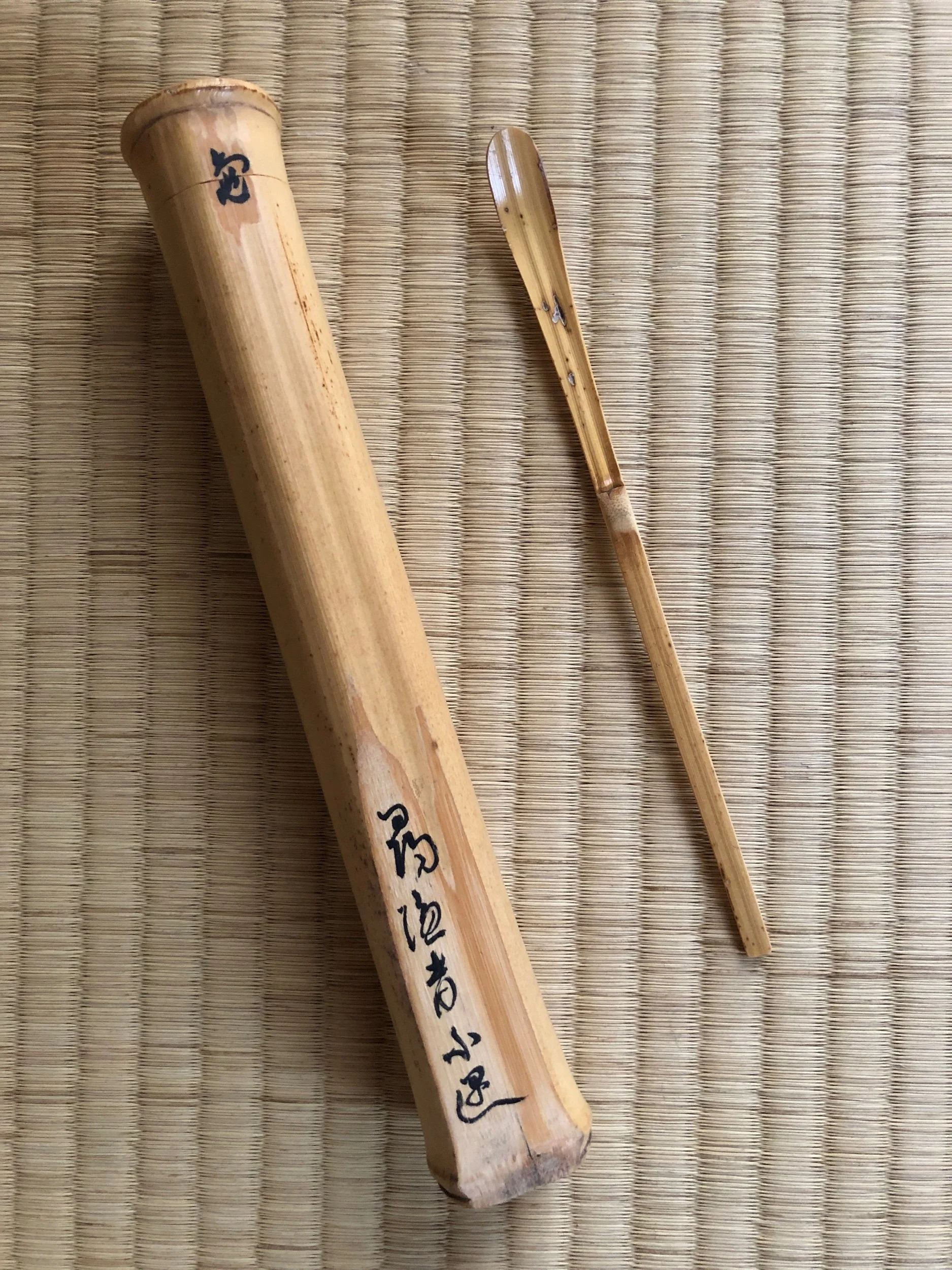Chashaku
by Kimon Soko Lightner
龜門宗光作茶杓
Hand-carved chashaku and tsutsu
The Significance of the tea scoop in Chado
The tea scoop is the cornerstone of the toriawase and should be carefully selected. The chashaku contains the maker's personality and how they view chanoyu. Though it seems like a humble piece of bamboo, the chashaku reflects the history and evolving tastes of chanoyu and ought to be regarded with that in mind. Often tea masters have deep connections with the chashaku they use as they are conscious of the minute sculptural details, significance of design and the profundity of it's gomei.
In order to appreciate the tea scoop, we must first see its artistic appeal then look at the scenery, quality of the bamboo and finally observe the details.
Chashaku Appreciation
It goes without saying that the tea scoop and tsutsu/case must be brought together to form a whole as the tsutsu is what gives the tea scoop weight.
Since the handwriting of the maker remains on the tsutsu's inscription, it is the most important point of interest when appreciating the chashaku. There are a wide variety of inscriptions on tsutsu and their contents reveal the state of mind and culture of their maker and play a major role in selecting toriawase.
Chashaku History
The preferred teascoops of Sung dynasty China were originally gold. It appears that ivory teascoops were more commonly imported and used in the 12th thru 16th centuries, while those of less means did use wood and bamboo scoops. Artisans at that time did also experiment with other materials like water buffalo horn, antler, tortoise shell, lacquer, silver and copper alloy but the ivory scoop became the orthodox or shin type used.
Murata Shuko had the carver Shutoku carve the first (shin style) bamboo tea scoop and Jo-o was the first to make bamboo chashaku which he incorporated the node at or near the end. This style was/is considered gyo and was created due to a shifting of taste in which more subdued wamono pieces were being mixed with karamono. These gyo scoops were not an imitation or substitute for shin chashaku but rather a response to the developing of wabicha.
As Rikyu began to upend the world of chanoyu with his radical new tea utensils, he began carving his own scoops leaving the node in the prominent central position and making use of interesting natural features of the bamboo. In Rikyu's wabicha Korean, Raku and Seto chawan aesthetically paired better with a so style chashaku than an ivory shin one.
Many famous tea masters and priests rely on bamboo craftsmen to supply them with basic chashaku forms which they then apply the finishing touches to and finally endow with a poetic name. It is actually quite rare to find a chashaku and its tsutsu which have been made by one hand and even more rare to find a set of two or three scoops.
In taste there tends to be a leaning to the classic shapes and dimensions of these very early Chinese tea scoops and those made by Rikyu but there are also a number of artists, especially in more modern times, whom have been a bit more expressive with their chashaku.
Gomei, the Poetic Name
Most every culture has given poetic names to interesting mountains, rivers, rocks, trees, buildings, cultural rituals, etc. In Tea there are a number of things which can be given a gomei. Even though a bamboo or wood chashaku is made of material which has been harvested from nature and bears no initial worth, its potential contribution to a tea gathering is immense.
Tea gatherings are deeply rooted in the 72 seasons and gomei are almost always derived or utilized from seasonal attributes. The poetic name of a chashaku can also be inspired by the landscape characteristics of the chashaku, be it it's shape, coloring and landmarks. Mei are often taken from classical Japanese or Chinese poetry, Zen phrases or famous places. Poetry from other sources is fair game as well. Local or indigenous traditions can provide very pertinent gomei which 'hit close to home'. Or, the gomei could be inspired by events from the time and place the chashaku was created or a tea event it was used at. This also goes for special dogu that have been found, gifted or have a particular association.
Gomei taken from poems are often the most impactful. Kobori Enshu is credited with being the first to use entire poems as names of chashaku. Another approach can be with taking just two or three characters from a poem. When the gomei is announced it can have one level of profundity and then when the remainder of the poem is recited the feeling can be so much more sublime, revealing other layers of the gathering or shared histories with the guests.
Mei which are plays on words or puns can also be rather fun.
Gomei taken from the Zen tradition are usually associated with the koicha seki and often, but not always, have a deeper feeling. Its always best to do some homework and understand where a phrase comes from, whether it be from Zen or any other cultural or traditional reference, and use what you are comfortable with talking about. A smattering of Zen isn't as good as something that comes from your own heart.
The chashaku gomei is given at the end of a tea gathering and is a final opportunity to give a capping conclusion to the occasion. The scroll gives the initial tone for gathering and each art object that follows in the sequence of the meeting can build upon that theme, like a music score. When the chashaku's mei is revealed in the final moments it can have a dynamic conclusion which can often last hours, if not days, in the hearts and minds of the participants as they continue on their journeys.
At one tea event I attended the gomei triggered a guest's knowledge of a related phrase of which the (knowledgeable) host was unaware. The exchange was most profound and quite moving and while I have forgotten the poems, I will always remember the experience.
龜門宗光 Don KIMON SŌKŌ Lightner
Kimon Sōkō is ordained in the Zen tradition and is a certified Urasenke teacher. Kimon sensei has been a ceramic artist and calligrapher since 1995, and also makes shifuku, chashaku and built his tearoom Kansenan.
Tea is a way of life for me, a practice, a discipline of the heart-mind. My creation of tea utensils originally came out of necessity but over the years has evolved, and continues to evolve, into an expression of my views of Chado and a way to more deeply experience tea and Zen. With each bamboo pole I cut and extract a chashaku from, is a story of my life and what I notice while being alive and as awake as I can be.
I live in the Sonoran Desert in Tucson, Arizona. The types of bamboo best suited for chashaku are a rare and precious commodity here so my ability to produce tea scoops and their containers is extremely limited . These are very personal creations for me. I don’t buy blanks and simply finish them. All of my chashaku are created entirely from scratch. I also do the calligraphy on each one. Some of the lids for the containers/tsutsu come from special places in the high deserts of Arizona. I hope you will use it to make tea and keep it’s spirit alive
My chashaku tend to be bolder and larger than the standard scoops and what you might be accustomed to using at your kēkoba. They reflect my taste in the bold shapes and sizes of chadogu from the late Momoyama period and some contemporary artist’s works.








